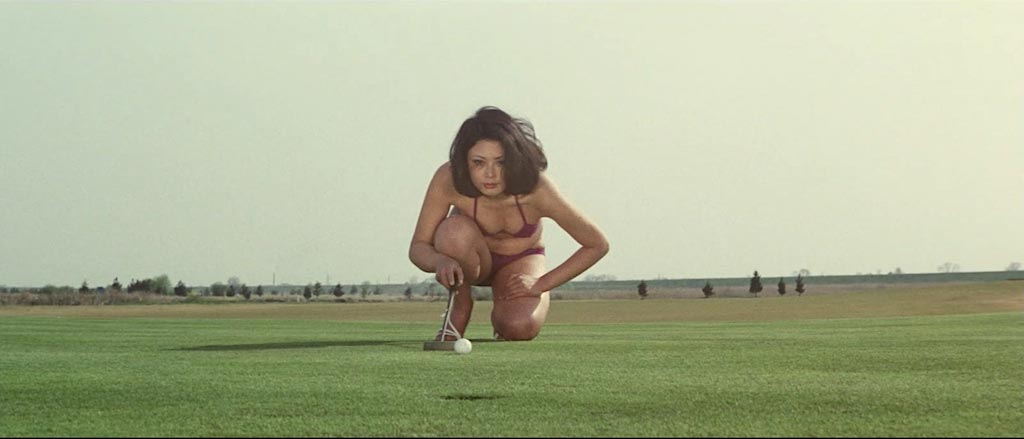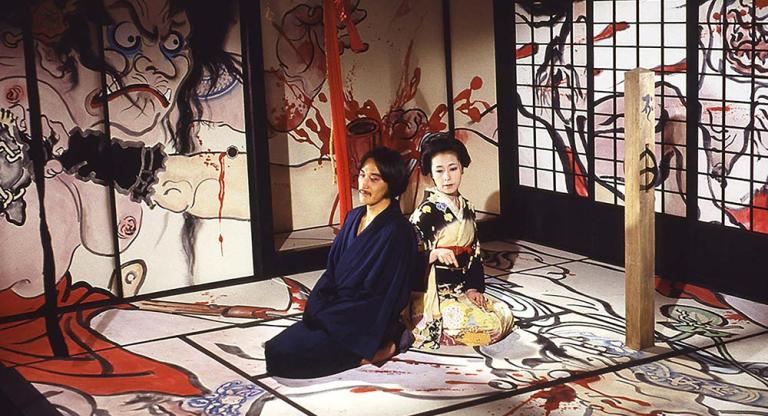Straightforward isn’t a word typically used to describe a film by Seijun Suzuki, Japan’s enfant terrible, but that’s how A Tale of Sorrow and Sadness (1977) begins, as a sincere and unremarkable drama about a female golfer’s meteoric rise to fame. Desperate to beat the international sporting competition, and to improve ad sales, the corporate suits at a sports magazine hatch a plan to manufacture the next big athlete. They begin grooming Reiko (Yoko Shiraki), a 22-year-old model and amateur golfer, whose ability to look good in a bikini is as much of an asset as her swing. (“Early summer breeze: chance for birdie,” becomes her winsome catchphrase.) She takes to it well enough, proving to be both talented and conveniently malleable. After winning her first tournament in an upset, she even executes a calculated fainting spell, orchestrated by her louche, long-haired manager/boyfriend Mr. Miyake (Yoshio Harada), whose ten-percent cut rests on her success.
Soon after, Reiko lands a daytime talk show and moves into a sleek rental, bisected by a strip of putting green, in an uppity suburb teeming with housewives. It is here, about forty minutes in, that the narrative blessedly swerves, and then snowballs, when Reiko and Miyaki commit a hit and run. (Suzuki regular Joe Shisido appears on the other side of justice as the questioning police detective.) Unable to grasp the nuances of parasocial relationships and mesmerized by celebrity, the injured party, Mrs. Senbo (Kyoko Enami), blackmails Reiko into friendship, prostitution, and then some. What launched as a largely flavorless rags-to-riches profile wrenches into a proudly florid and caustic critique—classic Suzuki. The unflappable director conjures psychedelic menace with violent zooms, incongruous cuts, and irradiating green visages, which reflect the corrupting chaos that eventually swallows Reiko whole. Reiko’s numbness grows with each of Mrs. Senbo’s perversions, Shiraki’s innocent rosiness overshadowed by Enami’s sharp witchiness.
The delirious sleaze of it all is cut by the sober clarity of the film’s withering insights, as we witness celebrity and advertising, ouroboric pillars of capitalism, leeching the faculties and morals of Reiko and her brainfogged homemaker-neighbors, finally transforming them into a riotous, covetous mob. A Tale of Sorrow and Sadness was Suzuki’s first production after his litigious dismissal from Nikkatsu ten years prior. The director had evidently amassed a well of contempt in the course of his blacklist, during which he made commercials.
A Tale of Sorrow and Sadness screens tonight, February 11, at Japan Society on 35mm. It is the closing program of their “Seijun Suzuki Centennial.”




